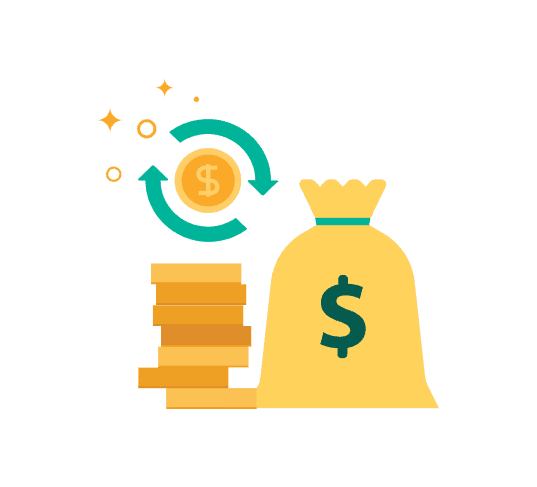Credible takeaways:
- Refinancing federal loans means you’ll lose access to special protections like income-driven repayment and forgiveness opportunities.
- Once you refinance your federal loans through a private lender, the process is permanent and you can't convert them back into federal debt.
- Consider consolidating federal loans instead to simplify repayment or gain access to forgiveness programs.
Before you decide to refinance your federal student loans, it's vital to understand the long-term implications of this financial decision. This guide explains everything you should know about federal student loan refinancing.
What happens when you refinance federal loans?
Refinancing your education debt requires you to take out a new student loan, often with more favorable terms than your current debt. You can refinance federal student loans, but only with a private lender, as the U.S. Department of Education doesn't offer refinance loans.
This means you would need to take out a private loan from a bank, credit union, or online lender in order to refinance your federal debt. If approved for refinancing, your new lender would work with your old loan servicer to repay your debts. Then, you'll begin making payments on your new private loan.
Your newly refinanced loan typically will have none of the benefits or perks that are unique to federal student loans, including:
- Access to income-driven payment plans, which limit your monthly payment to a percentage of your income
- Eligibility for loan forgiveness for public service work or after making 20 to 25 years of payments on an income-driven plan
- Eligibility for loan forgiveness or deferment programs that the Department of Education may offer in the future, like the COVID-19 payment pause
- The ability to switch your payment plan as needed, and generous options to pause payments through deferment or forbearance
- Subsidized interest on certain loans when payments are in deferment for a qualifying reason
These benefits generally aren't available on a refinance loan from a private lender.
The Department of Education does offer a Direct Consolidation Loan, which allows you to get a new loan to pay off one or more qualifying federal student debts. However, it’s not the same as refinancing, since you can't lower your interest rate with this method. The rate on your new consolidated loan is just a weighted average of the existing loans you're repaying.
Check Out: Student Loan Consolidation: Is It Right for Me?
Pros and cons of federal loan refinancing
If you're thinking about refinancing, consider both the pros and cons of getting a new private student loan to pay off your federal debt.
Pros of refinancing federal loans
- Your refinance loan may have a lower interest rate than your existing federal debts.
- You can change the repayment term on your new loan — either extending it to lower your monthly payment, or shortening it to pay off your debt faster.
- You can combine multiple loans into one, leaving you with just a single monthly payment to manage instead of several.
Cons of refinancing federal loans
- You’ll lose access to income-driven repayment and other flexible federal repayment plans.
- You’ll no longer be eligible for federal loan forgiveness programs.
- You’ll lose access to the generous deferment or forbearance options offered by the Department of Education.
The biggest pro is that you could potentially get a lower interest rate. Private lenders set rates based on market conditions and your financial credentials, while federal student loan rates are set by law and are the same for every student who borrows at a given time. (Note that different types of federal loans have different interest rates.) Once you have your federal student loan, the interest rate won't change.
If you obtained federal loans with high rates but you can now qualify for lower rates on the private market, refinancing may allow you to get a new loan at a better rate, saving you in interest costs.
Check Out: Should I Refinance My Student Loans?
When NOT to refinance federal loans
You should avoid refinancing federal loans if you plan to take advantage of income-driven repayment or federal loan forgiveness programs, either now or in the future.
Once you’ve converted federal loans to privately refinanced debt, you can't go back. If the government decides to forgive student debt in the future, or pauses payments again due to another national emergency, you will likely not benefit. Likewise, if your income drops or you decide to work for a not-for-profit organization, you won’t have access to income-driven repayment plans or loan forgiveness programs, such as Public Service Loan Forgiveness (PSLF).
You should also avoid refinancing federal loans if doing so would raise your interest rate, as that would make your loan repayment costlier.
When to refinance federal loans
If you can qualify for a refinance loan at a lower interest rate than you’re currently paying and you’re confident you'll never take advantage of any federal benefits and protections, then it may make sense to move forward with refinancing. See what the lenders below can offer you.
Credible rating
Fixed (APR)
5.48% -
Loan Amounts
$10,000 up to total refinance amount
Min. Credit Score
680
Credible rating
Fixed (APR)
5.49% -
Loan Amounts
$5,000 - $250,000
Min. Credit Score
680
Credible rating
Fixed (APR)
5.85% -
Loan Amounts
$5,000 - $250,000
Min. Credit Score
670
Credible rating
Fixed (APR)
6.00% -
Loan Amounts
$7,500 - $200,000
Min. Credit Score
700
Credible rating
Fixed (APR)
6.20% -
Loan Amounts
$10,000 up to the total amount
Min. Credit Score
670
Credible rating
Fixed (APR)
6.34% -
Loan Amounts
$7,500 - $250,000
Min. Credit Score
680
Credible rating
Fixed (APR)
6.49% -
Loan Amounts
$10,000 - $750,000
Min. Credit Score
Does not disclose
All APRs reflect autopay and loyalty discounts where available | LightStream disclosure | SoFi Disclosures | Read more about Rates and Terms
How to refinance federal loans
If you want to refinance your federal student loans, you should start by researching the top refinance companies. Most lenders allow you to get quotes for a refinance loan online. After inputting your financial information, you can see what rate and terms you'd likely be offered from different lenders.
If you can find a good student loan refinance offer and decide to move forward, you'll submit a full application and provide more financial details, including information about the loans you're refinancing.
If approved, your new loan funds will repay your federal debts and you'll begin making payments on the new loan. Be sure to continue paying your federal student loan servicer until the refinance is complete and your balance is fully transferred to your new private lender.
Refinancing vs. consolidation
Remember, private refinancing and federal consolidation are not the same. Refinancing must be done through a private lender, while consolidation can only be done through the Department of Education.
A Direct Consolidation Loan allows you to combine multiple federal debts into one new loan that gives you access to more repayment options, including longer repayment timelines and income-driven repayment for parent PLUS loans. But your interest rate won't change — it will be a weighted average of the consolidated debt. You will retain your federal borrower benefits, though.
Refinancing can change your interest rate, but it's generally better to refinance private loans vs. federal loans, as you will lose access to income-driven repayment plans and forgiveness programs offered by the government for your federal loans.
If you believe consolidating would be better for you than refinancing, check out this guide on how to consolidate to explore this option and determine if it is the right financial choice.


